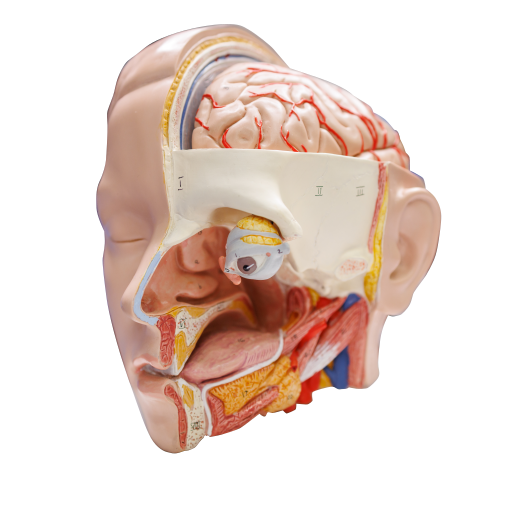Imperial Lates: The Brain
This temporary exhibition covered a wide range of topics, ranging from controlling technology with your mind to neuron-inspired string art

BRAIN GAMING
From art to science, ‘Brain Gaming’ is a research project conducted by Next Generation Neural Interfaces Lab, which connects technology to our nervous system. This involves the development of headbands able to decode what frequency you are looking at on a screen. A Master’s student involved in this project showed us squares displayed on a monitor, located at each corner of the screen and flashing at different frequencies. He explained that looking at the square flashing at 7Hz sent a signal to your brain equal to 7 Hz, which is then picked up by electrodes on the headband. Currently, the lab is working on an algorithm that decodes which frequency you are looking at, which could help control a video game with your mind or be used to control a mouse on a computer.
THE WELLBEING OF LIFE
The Wellbeing of Life was an interactive collaboration with the public to determine which factors most impact mental health at different points in life. Conducted by The Study of Cognition, Adolescents and Mobile Phones (SCAMP), the public were invited to write down factors they thought most affected mental health on cards and tie them up using string on a net which served as a timeline spanning from youth to old age. Examples included sexuality, university, and pressure to find a life partner during early adulthood, to fear of being alone and toxic family relationships in older age.
TALK: THE SCIENCE BEHIND GAMBLING ADDICTION
Imperial invited an expert panel to discuss the unique nature of gambling disorders, and how the interplay between biology and societal impact leads to a disease that is hard to characterize. Among the panelists sat Dr David Erritzoe, a consultant psychiatrist whose research team is attempting to determine the neurobiological basis of gambling addiction by mapping the brain to develop novel treatments. Dr Erritzoe recalled an experiment conducted on Paul Merson (former professional football player and gambling addict) which showed evidence that Merson’s brain responded more to gambling images than those depicting food, family, or nature. In effect, they explored how gambling adverts appear to act as triggers, with even the anticipation to an act of gambling increasing the levels of dopamine in the brain, the “feel-good” hormone associated with feelings of reward.
DESIGNING FOR DEMENTIA
With an ageing population, limited options for point of care treatments, and no cures currently available, the development and design of novel technologies to help dementia patients is essential. Patients are often left alone, isolated, and unable to receive the care they require, leading to preventable hospital admissions. The Care Research & Technology center, based at Imperial, looks at human-centered design, working directly with patients affected by dementia, clinical care teams, and software engineers. The team have developed a combination of off-shelf devices and in-house technologies. Passive devices include those able to track a patient’s behavior and health, gathering data from home, such as devices that take temperature and test for UTIs. This data travels to clinical dashboards, an app designed by the software engineers which logs and monitors patient health daily, and is then reviewed by the monitoring team. Interestingly, the data is directly available to researchers, a unique data retrieval system that takes information straight from the patient's home rather than isolated from clinical trials in a lab environment. But, it’s not only about the science. From the participants perspective, there is someone there to check in on them, allowing them to feel cared for and reducing the isolation many older patients feel.
NEURON STRING ART
The neuron string art station, led by scientists at Imperial, researched how neuronal death leads to a loss of brain connectivity and how we can target this process to treat dementia. Laurie O’Garro, a string artist and teacher at the stall, described how she runs string art workshops for both children and adults to escape the distractions of daily life. In this activity, people were guided to stitch into cardboard pieces displaying the photo of a brain. Laurie described how the lines stitched symbolized the brain of patients with dementia, with sections of tightly woven string gradually distancing, depicting how thoughts would become more sparse and harder to connect.









